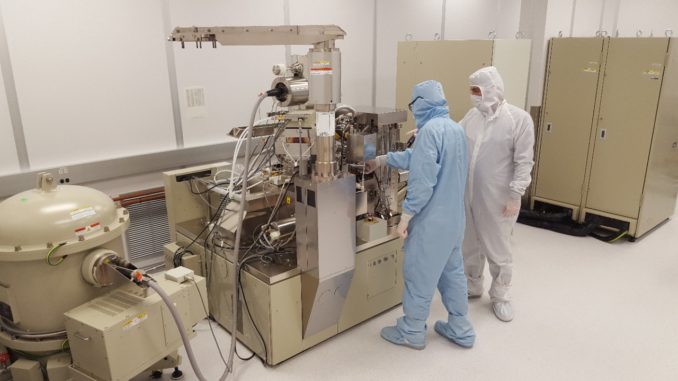Electron Beam Lithography has contributed immensely to various specialized applications, including semiconductor manufacturing, micro-electromechanical systems, nano-electromechanical systems, and microscopy.
So, How Does The Technology Work?
Commonly referred to as e-beam technology, the system uses electrons that alter the molecular state of a targeted material or surface.
Therefore, the EBL Lithography involves the generation of a cloud of electrons inside the vacuum chamber. The electrons’ cloud is then accelerated through the thin, metallic foil window and eventually directed onto the moving printed web surface. The inks, coatings, and adhesives that react to the beam feature molecular elements commonly referred to as monomers and oligomers. These accelerated electrons then connect the molecules into longer-lengthy polymers that instantly change the wet state’s chemical composition into the dry or solid-state.
What Are The Advantages Of Using Electron Beam Technology?
Features a High Precision Ensuring Exact Reproducibility
The small beam diameter features high stability, which ensures high geometrical precision. Therefore, almost all the work parameters are controlled electronically and can be adjusted to changed tasks. The outcome is an excellent reproducibility resulting from the applications.
Electron Beam Technology Is Economical
EBL lithography delivers high-level efficiency compared to other technologies. Besides, E-Beam technology provides a high working speed with minimal heat input. Again, it gives a contactless operation, making it a more economical approach compared to other technologies.
Delivers Cost-Saving Benefits
When it comes to ION beam technology, one of the top benefits is ensuring an enhanced choice of materials. This leads to avoidance of reworking and corrections, providing minimal distortion. Another principal advantage is the integration in production lines, achieving cost reduction benefits. Besides, the electron beam melting process involves the abdication of filler material and shielding gas. It provides alternative approaches for design and production planning enabling improvements in new products’ existing and realization.

An Overview Of The Electron Beam Melting Process
The electron beam melting process is often used in the joining of metallic materials. The technology uses a very thin weld with a little heat affecting the zones being welded. This minimizes the amount of energy that is transferred to the workpiece and its distortion. The parts and the subcomponents that require high level mechanical pre-processing can be joined using the method without sustaining any damage because of low angular distortion and minimal cross-section shrinkage.
The electron beam technology features the lowest energy per section and attests to the best electrical efficiency. Therefore, technology is regarded as one of the most economical and efficient. For that reason, the technology is applied in a wide range of applications, from welding films to large workpieces with over 200 millimeters thickness. To make this possible, the electron beam lithography resolution features an extremely fast electron beam deflection making other applications possible. If this is not possible, the process would be complicated.
The EBL lithography produces a high power density of electron beam in a vacuum offering narrower welds than the average melting process. Regarding the electron beam melting process, very little heat affects the zones being melted. Therefore, melting is achieved without the tarnishing effect. Compared to conventional welding, great melting depth and high melting speeds contribute to an extraordinary quality.
Conclusion
The conventional melting process features reactive materials like titanium. This is done under a sensitive shielding gas atmosphere. The e-beam welding ensures excellent results without any harmful emissions in the electron beam chamber vacuum.

